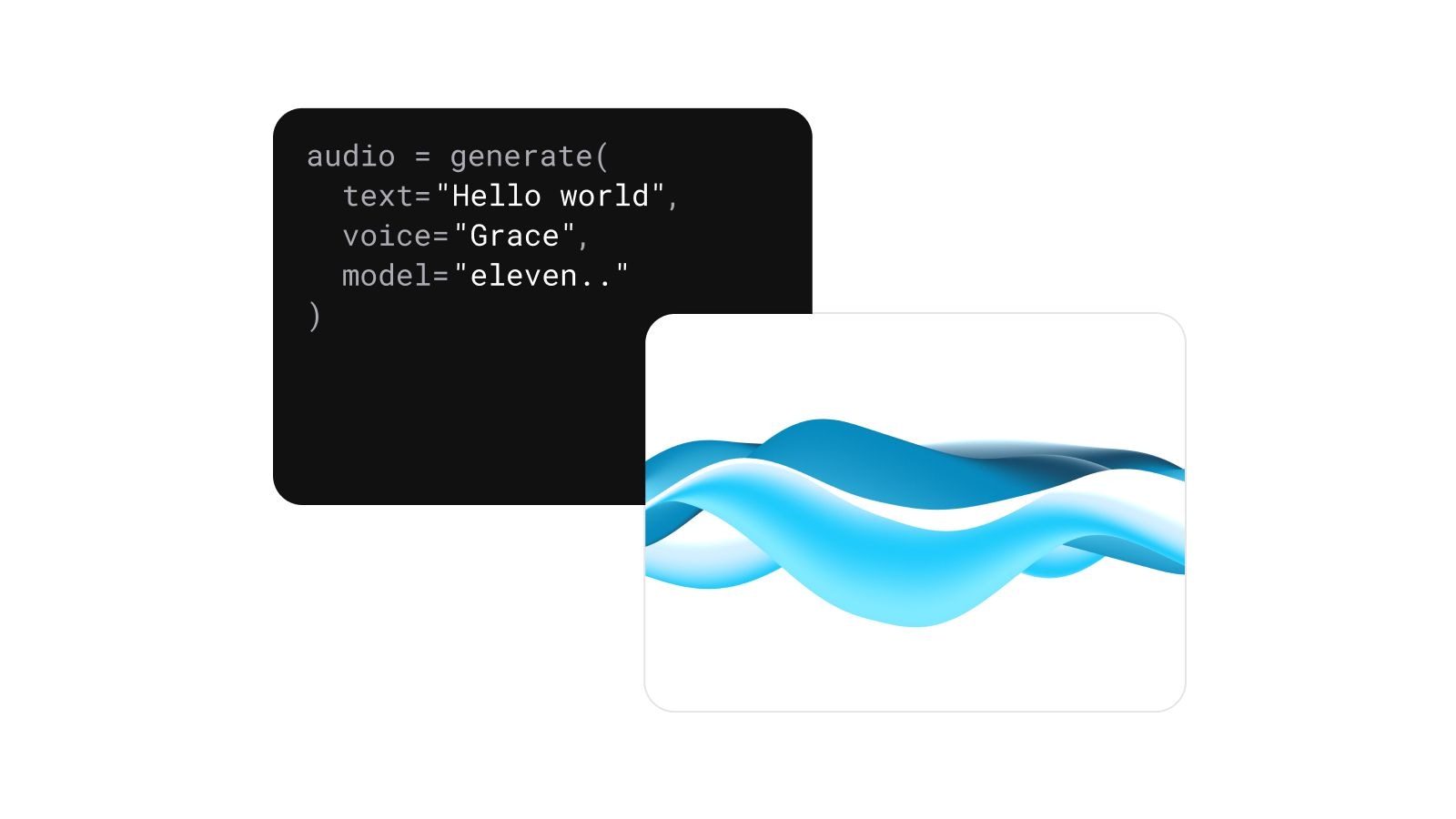
ウェブ、モバイル、または電話でも、わずか数分でエージェントに音声を追加できます。私たちのリアルタイム API は、低レイテンシでフルカスタマイズが可能、さらにシームレスな拡張性を提供します。
初めて会話型AIエージェントを構築するのは難しそうに思えるかもしれませんが、適切なツールと明確な計画があれば、初心者でも十分に実現可能です。このガイドでは、プロセスをシンプルで実行可能なステップに分解し、自然で効率的にユーザーとやり取りする音声対応エージェントを作成する手助けをします。
ユーザーと自然に理解し合い、コミュニケーションを取るバーチャルアシスタントを想像してみてください。一般的な応答を本物の人間の会話に置き換えます。
これが会話型AIの力です。

ウェブ、モバイル、または電話でも、わずか数分でエージェントに音声を追加できます。私たちのリアルタイム API は、低レイテンシでフルカスタマイズが可能、さらにシームレスな拡張性を提供します。
会話型AIエージェントは、ユーザーの入力を理解、処理、応答するAI駆動のシステムで、自然な会話をシミュレートします。これらのエージェントは自然言語処理 (NLP)、 はAIを活用したシステムで、ユーザーの入力を理解し、処理し、自然な会話をシミュレーションしながら応答します。これらのエージェントは自然言語処理(NLP)を組み合わせています。テキスト読み上げ (TTS)、機械学習 (ML) を組み合わせて、ユーザーの質問やコマンドを解釈し、応答を人間らしい音声出力に変換します。時間とともに理解と応答の質を向上させます。
この概念は未来的に聞こえるかもしれませんが、実際にはSiriやAlexaのようなバーチャルアシスタント、カスタマーサービスチャットボット、スマートホームデバイスなど、日常のツールで会話型AIに出会っています。
しかし、すべての会話型
このガイドでは、機能的な会話型

ゼロから会話型AIエージェントを構築するのは最初は難しそうに思えるかもしれませんが、実際にはそれほど難しくありません。人工知能、テキスト読み上げ技術、開発ツールの進歩により、スキルレベルや技術的背景に関係なく、誰でも会話型AIエージェントを構築できるようになりました。
プロセスを簡単にするために、4つのシンプルなステップに分けました。
技術的な側面に入る前に、エージェントの核心的な目的を特定することから始めましょう。自問してみてください:
例えば、FAQを処理するカスタマーサポートボットを構築するのか、予定を管理するバーチャルアシスタントを作成するのか?または、オンライン学習で学生を支援するバーチャルチューターを作りたいのか?明確な目的を持つことで、デザインの指針となり、重要な機能に集中できます。
会話型AIエージェントを構築するには、自然言語理解 (NLU)、TTS、および追加機能をカバーするツールが必要です。考慮すべき点を以下に示します:
ツールが揃ったら、エージェントを構築する時です:
例えば、エージェントが医療現場で支援する場合、落ち着いた安心感のある声がユーザーの信頼を高めることができ、旅行アシスタントにはエネルギッシュなトーンが適しているかもしれません。

当社の低レイテンシーテキスト読み上げ(TTS)APIの統合は簡単です。最小限のコーディング作業だけで、クリアで高品質な音声をお客様のアプリケーションに組み込むことができます。
テストは、会話型AIがスムーズに動作し、正確な応答を提供するために重要なステップです。
エージェントの改善は継続的なプロセスであることを忘れないでください。より多くのユーザーとやり取りすることで、新しいデータを取り入れてモデルをトレーニングし、応答をよりスマートで適応性のあるものにしていくことができます。
初めての会話型AIエージェントを構築することは、よりスマートで直感的なデジタルツールを作成するためのエキサイティングなステップです。適切な基盤があれば、ユーザーと人間のようにやり取りし、特定のプロセスを案内しながら、必要な安心感を提供するAIエージェントを構築できます。
高度なテキスト読み上げツールであるElevenLabsを使えば、リアルでカスタマイズ可能な声を簡単に追加し、ユーザー体験を向上させることができます。サポートの自動化、バーチャルチューターの作成、パーソナルアシスタントの構築など、会話型AIが優れたパフォーマンスを発揮するだけでなく、聞き心地も良くなることを保証します。
始める準備はできましたか?リアルなAIエージェントは、シンプルな統合で実現できます。


Introducing a set of updates that expand what creators and developers can build with Eleven Music.
Powered by ElevenLabs エージェント